As a Blue Badge tourist guide, I have noticed that visitors are always very excited to be shown Harrods department store in London. The very name conjures up images of luxury and quality. Due to its history, clientele and location, it is arguably the most well-known department store on the planet.
The motto on the Harrods coat of arms is Omnia Omnibus Ubique, which is Latin for “All things, for all people, everywhere”. It sounds fancy, but I am not sure how accurate it is – they do not sell everything, at least not anymore. The pet store on the 2nd floor shut 6 years ago. Gone are the days when Noel Coward had a pet alligator bought for him, and Ronald Reagan had a baby elephant purchased on his behalf for a Republican Party rally. Their product range is, however, still extraordinary: 330 departments over 1.1 million square feet and 6 floors of retail space. The building also has 7 floors below ground for storage. It’s one of the largest department stores in Europe.
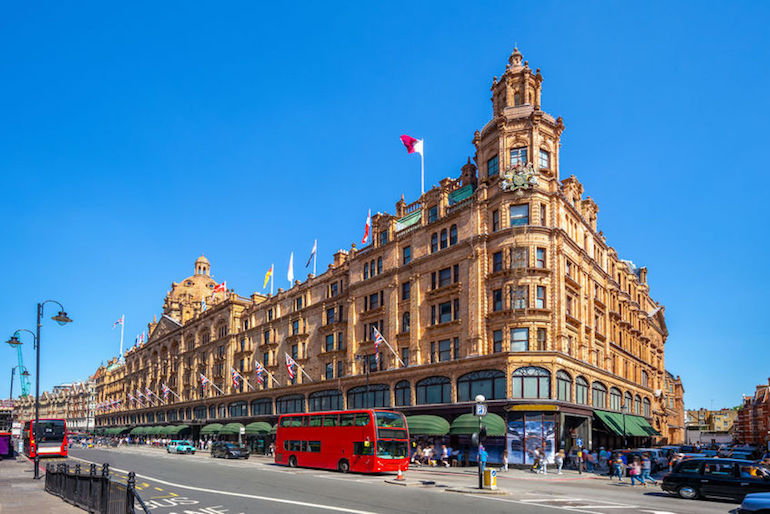 Street view of Harrods department store in London. Photo Credit: © Chan Richie via 123RF.
Street view of Harrods department store in London. Photo Credit: © Chan Richie via 123RF.
The Egyptian Escalator
Harrods is owned by Qatar’s sovereign wealth fund, which bought the store from Egyptian businessman Mohamed Al-Fayed a decade ago. You’ll often find supercharged supercars outside the store carrying Kuwaiti & Qatari plates. Much of Al-Fayed’s legacy remains. There is the wonderfully exquisite/uber-kitsch (delete as appropriate) Egyptian escalator at the centre of the building. Images of pharaohs with the visage of Al-Fayed still stare down on visitors as they head up. Speaking of escalators, London’s first escalator opened at Harrods in 1898. The moving ramp had customers so traumatised when they got to the top that a shot of brandy was handed out to the men. The women were not so lucky and were just given smelling salts to revive them after the trauma of the experience.
Harrods over the years
Harrods department store in London was founded by Charles Henry Harrod in 1849 – originally just a single room located where the Egyptian room is today halfway along the side facing Knightsbridge. It became a department store in the 1880s and over the next century and a half established its luxury reputation around the world. Like Blue Badge guides and the Royal family, Harrods has adapted and changed over the years. Gone are the days when it offered deportment lessons for debutantes being presented to King George V. Gone are the days when they offered flying lessons. Gone are the days (although they weren’t that long ago) where the female staff on the shop floor had to wear heels. Gone are the fur coats for sale……actually no they are still there, as are the frequent protests by animal-rights activists outside.
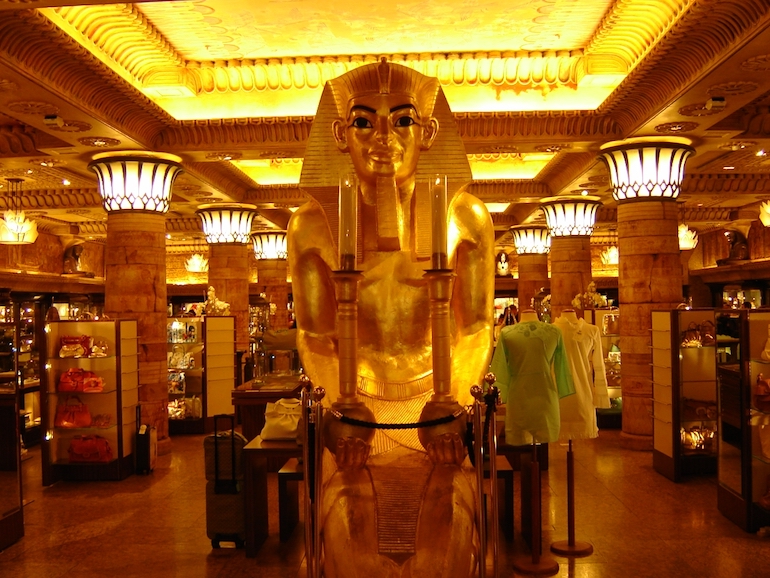 The Egyptian themed room at Harrods department store in London. Photo Credit: © Targeman via Wikimedia Commons.
The Egyptian themed room at Harrods department store in London. Photo Credit: © Targeman via Wikimedia Commons.
The Harrods Food Halls
Next time you visit London, with or without a Blue Badge guide, I would recommend you pay a visit to the sumptuous Harrods Food Halls – each selling deliciously fresh produce. The most stunning of all is the former Meat and Fish Hall. Last year it became the new Dining Hall, with a collection of dine-in restaurants that make use of products sourced directly from the Harrods Roastery and Bake Hall. Look up at the ceiling and you will see wonderful Art Nouveau tiles created in 1902 by Royal Doulton. A good tip is to visit the Harrods Deli just before the store closes at 9 pm. The sandwiches become massively discounted. Since everything is so fresh, they will be making new sandwiches the next day.
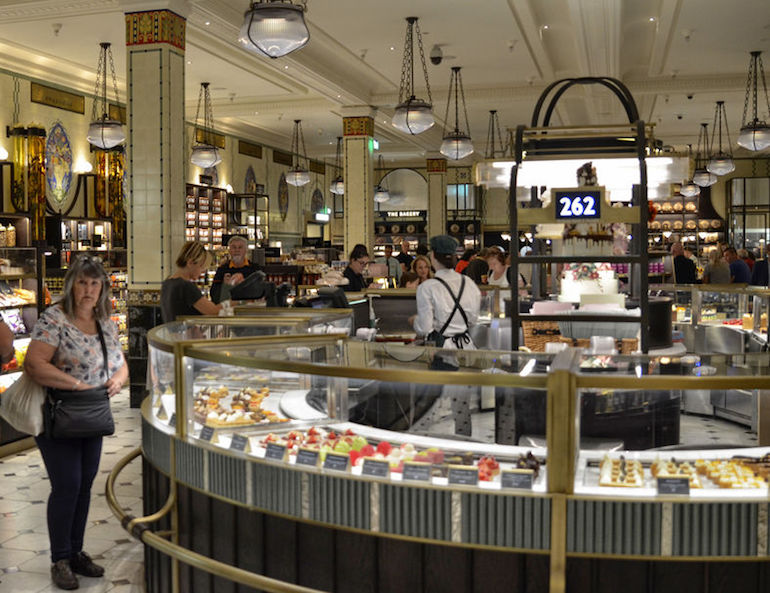 Food Hall at Harrods department store in London. Photo Credit: © Massimo Parisi via 123RF.com.
Food Hall at Harrods department store in London. Photo Credit: © Massimo Parisi via 123RF.com.
Harrods – more an alternative universe than a store
Harrods department store in London attracts a veritable smorgasbord of people from all over the world – both employees and customers. Many people will not even purchase anything. The store has become a visitor destination in its own right. Of the people actually spending money there, some will look for the cheapest item, just so they can leave with the coveted green Harrods bag. Others, of course, will spend massive sums. Harrods sometimes feels more retail theatre than retail therapy. The level of customer service from the personable staff is extraordinary, and the range of products breathtaking. It is definitely worth a visit at your earliest opportunity.



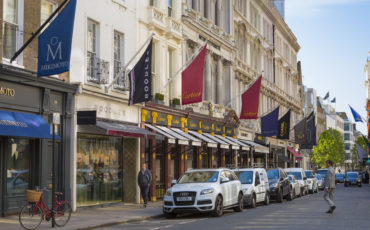
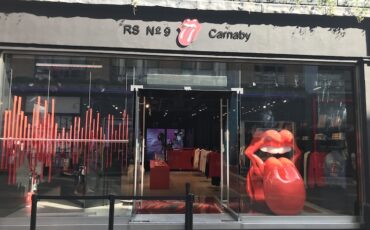


Leave a Reply